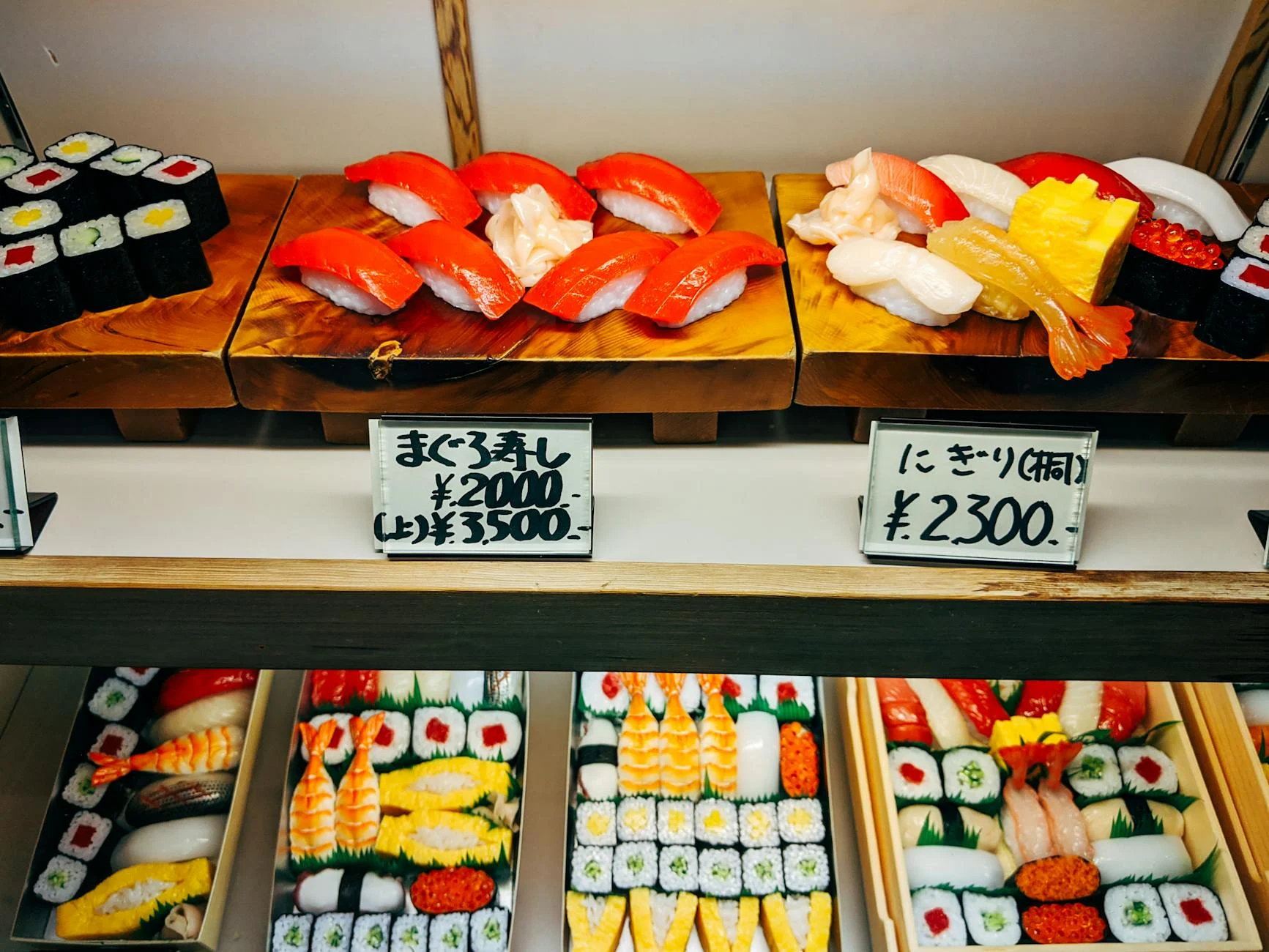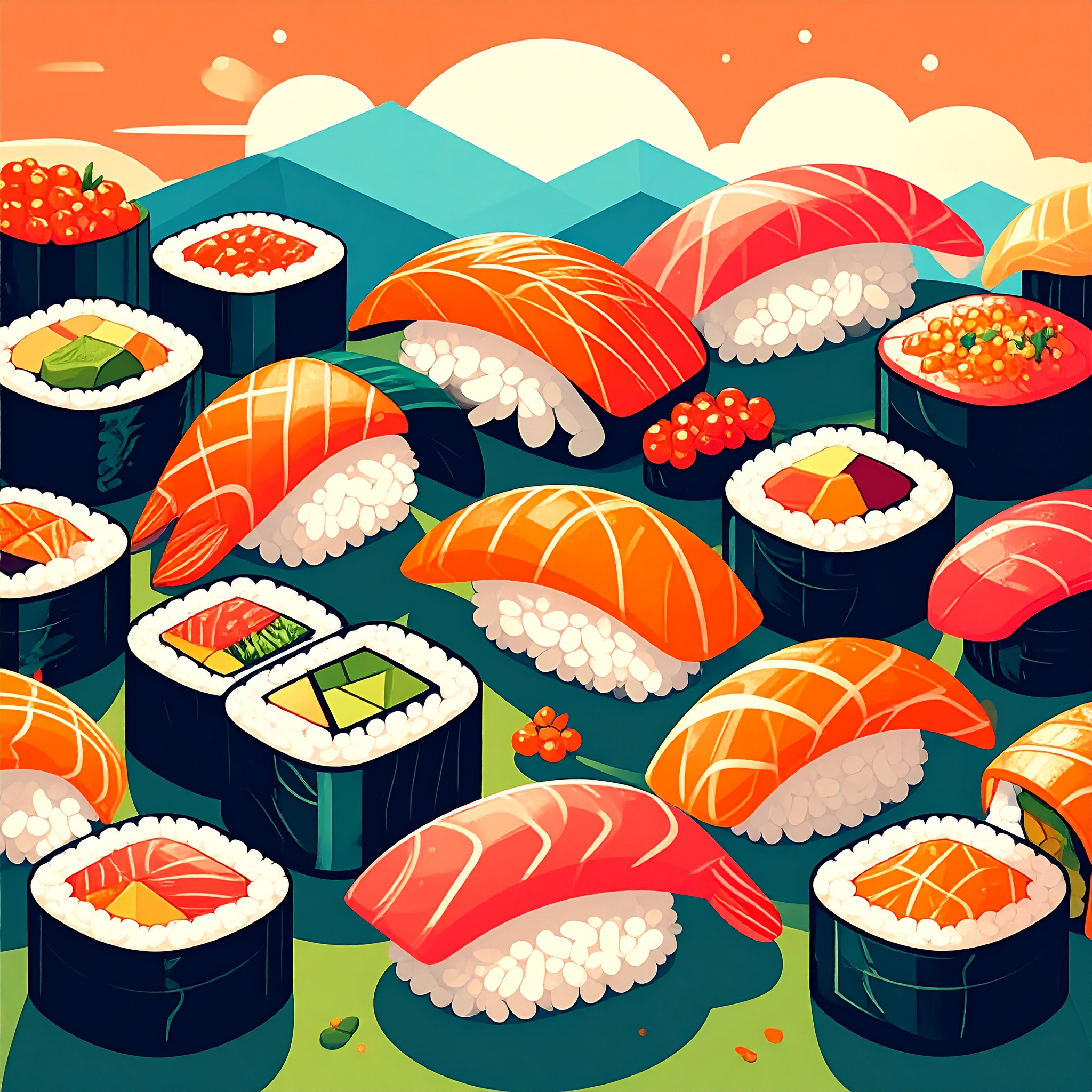Sushi has earned its place as a beloved global cuisine — its name and forms adorning streets in cities worldwide. Yet when one encounters Edo‑mae (Edo‑style) sushi, an indescribable sense of quiet awe often follows. This transcends mere freshness or visual elegance; it is rooted in the craftsman’s silent precision and the artistry of ma — the meaningful pause.
Conceived in Edo’s vibrant street‑food culture, nigiri was born as a swift, hand‑held nourishment for laborers. Without refrigeration, fish were skillfully cured with vinegar or salt, simmered or grilled — each technique enhancing flavor and preservation. Today, sushi masters honor these antiquated methods, elevating a single piece of nigiri into an art form.
At the counter, the experience centers on one piece — crafted within a span of mere seconds. In that moment converge the rice, the vinegar, the precise slice of fish, the edge of the knife, and the master’s fingertips — in temperature and pressure — giving birth to culinary perfection. In this fleeting act reside the seasons, the origin of the ingredients, and even the unspoken connection with the diner.
Seated before an Edo‑mae chef, one is first struck by the hush. No flourish, no commentary — only silent, eloquent motions. Each gesture speaks volumes: the arc of the hands before forming, the whisper of the knife against fish, the rhythm of picking rice, and the pause between shaping and serving. It is in this ma — this pause — that Edo‑style sushi reveals its most refined essence and the master’s aesthetic sensibility.

In this context, ma is far more than a measure of time—it is an exquisite sensitivity to the diner’s rhythm, the ambient atmosphere, and the subtlest shift in energy at the counter. The sushi master must sense the perfect moment—not too early, not too late—to present the piece. At the instant when the rice is at its optimal warmth and the fish’s aroma peaks, a silent piece of sushi is placed before you. In that instant, the diner’s hand tenses in anticipation.
With the smallest movement, the chef reads the person across from them—speed of eating, conversational tone, eye contact. Sometimes they fall silent and focus entirely; other times they gently speak to ease the atmosphere. These nuances matter—they influence the taste experience itself. Sushi is not merely food, but a “dished moment,” created through the unity of ingredients, artisan, and diner.
Each piece of Edo‑style sushi reveals a philosophy of subtraction—no unnecessary addition, only the pure power of the ingredient. A twist of citrus with a white‑fleshed fish, a drop of reduction sauce on shellfish. The cut of the blade affects the mouthfeel, and the texture of the rice is adjusted according to daily changes in moisture and temperature. Invisible refinements are layered into a small hand‑pressed morsel—a work of art born from concentration and care.
It takes many years to become a fully realized sushi chef. Apprentices often begin with rice cooking—sometimes not handling fish for several years. Throughout this period, one’s training extends beyond technical skill, focusing on developing a profound respect for ingredients, an intuitive awareness of the space and mood in the sushi bar, and a disciplined mind. It is over this time that ma—the artful pause—naturally infuses the chef’s hands.
Today, a new generation of sushi artisans offers a fresh perspective. After studying abroad, they return to create Edo‑style sushi that embraces tradition yet welcomes innovation. Alongside seasonal Japanese ingredients, these chefs now interpret global flavors through Edo‑mae techniques. While their creations may appear modern, they remain rooted in unwavering concentration and mastery of timing. Unswayed by trends, their dedication to the essence of sushi provides the foundation for a culture that evolves without losing its soul.

There is a breathtaking intimacy between the sushi being crafted, the moment it is received, and the instant it touches the diner’s lips. Within this delicate interval, a chef’s entire day—or even a lifetime—is concentrated. Though each day seems familiar, no moment is ever the same. That is why sushi masters invest their lives into each single piece. Beneath its exquisite taste lies an ocean of experience and observation—each fraction of a second finely tuned in pursuit of perfection.
Edo‑style sushi transcends the simple union of rice and seafood. It is a consummate art—an infinitesimal world where nature, humanity, and technique harmonize within the palm of one piece. At its heart lies ma—a sensibility of timing and silence. In that unspoken rhythm, one feels the unvoiced atmosphere, the serene stillness within motion, the culture of synchronized breath. Encountering this aesthetic invites us to experience not just sushi itself, but the refined sensitivity that Japanese artisans have cultivated for centuries.
To savor sushi is to engage with the time invested in each morsel. It is to sharpen one’s own capacity to taste ma. Across the counter of an Edo‑style sushi bar today, the unspoken dialogue and quiet tension endure—an aesthetic that will continue to leave a profound, lingering impression on those who seek it.




